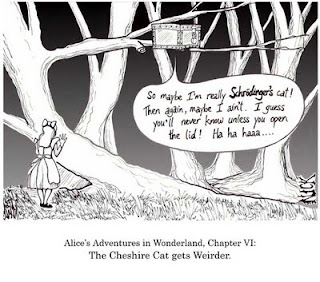If I’ve learned anything so far from this research, it is that virtual reality and “real” reality are not that different. Virtual environments, after all, are based on our conception of reality as well as physical quantities. I started pondering this over the weekend after experiencing time pressures simultaneously in both virtual and physical worlds – I was sitting at the computer, totally enthralled in a conversation with a resident artist when RL brought be back to reality; my cats started screaming their heads off. While this incident has happened numerous other times, and I could have simply overlooked it as another instances of pet ownership, I realized that virtual worlds could never be truly “virtual” as long as they obey the same physical quantities as the real world. In other words, at the moment, our physical conception of time exists in both virtual and physical worlds.
We are eons away from “Matrix-like” time gaps were 10 minutes in the physical world translates to a virtual lifetime. And then again, is the issue really of time or of immersion? In other words, to use the kitty example noted above (quite ironic, I know given Schrodinger’s iconic thought experience, but please bear with me) – I exist both in the virtual and physical world at the SAME time, experiencing both simultaneously. As I am navigating the virtual landscape and creating memories in that space, I am also experiencing a physical space where both virtual and physical experiences are measured using the same physical quantities (one being time). When I am immersed in the virtual space, I may forget about “time,” but the second a physical world event makes me lose my focus, I am back in the flow (to borrow Csikszentmihalyi’s terminology) of physical reality. When described in such a way, immersion in virtual reality is akin to extreme concentration. When experiencing a virtual space, I am not, for the most part, “immersed” in a world with different physical quantities. That, in my opinion, is the largest barrier to true immersion in a vertical space.
Time is defined by Wikipedia as “…the continuing progression of events occurring in apparently irreversible succession from the past through the present to the future” and as “…a measure of the durations and frequencies of events and the intervals between them.” Ultimately, virtual and physical time must both share the former definition. It is the latter, the definition of time as a measurement, that could be effectively altered in virtual reality, making virtual and physical reality unfold simultaneously, yet at different rates. Which begs the question – if time measurement in virtual reality can be altered, can boredom even exist? Interestingly, virtual reality is currently often used as a relief from real world boredom. It is only once we grow bored with the virtual reality that we return to physical reality and so on.

I agree that the progression of events, especially when the experience is immersive, keeps things moving and there wouldn’t be boredom.
There are those who come to SL and limit there imagation by moving into communities they are familiar in real life. In doing that, they can somewhat experience the things they enjoy in real life, over and over. In my mind, doing the same thing over and over is where real boredom comes from. It’s all a question of degrees I suppose.
Some communities are very robust and offer a wide range of activities, others just try to hold everything within a certain reality.
Some people need to let their imaginations run and can’t be contained within a single community or reality or identify. I’m saying any of these are a good or bad thing, but I do believe boredom is a product of a time track with little movement.
Interesting to introduce the “time” dimension Kat! I’ve thought about a lot of things, but I really haven’t considered this much.
I think you mean “Inception” not “The Matrix” — as far as I know, time in The Matrix narrative is linear and pretty much maps to “real (haha) time” — when they’re in-world..,. their fleshvatars are in chairs in the mother ship and not doing anything else.
It’s Inception however, where large amounts of experience time can pass in small amounts of physical time… and… appropriately enough… Inception is about dreams… which, as a non-Inception player (haha, when do we get THAT game??)…
Dreams, are the one place where I DO experience distorted, in fact, like the film, hugely distorted, time scales. I *think* we’ve all experienced seemingly long series of events in dreams, only to wake up and discover we were asleep for 5 minutes…
Silly me; of course it was Inception 🙂
i keep thinking that it would be handy to refer to time as multiple dimensions. There’s Clock Time which is handy on Earth and there’s Space-time. Perhaps time distortion is a dimension or maybe just a properties of time?
But then i need these other dimension of time for a novel, so don’t pay too much attention to my notion. heh